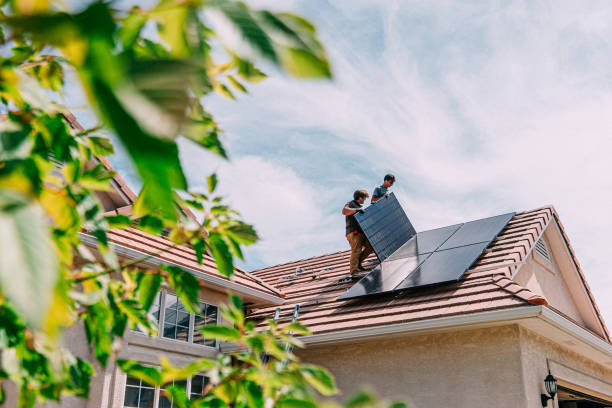Understanding Rent-to-Own Solar Panels: A Flexible Way to Access Clean Energy
Transitioning to renewable energy has become increasingly accessible through various financing options. Rent-to-own solar panels offer homeowners a pathway to harness solar power without the significant upfront costs associated with traditional purchases. This arrangement allows you to enjoy the benefits of solar energy while gradually building ownership over time, making clean energy more attainable for a broader range of households.

Solar energy has transformed from a luxury investment into a practical solution for reducing electricity bills and environmental impact. As more homeowners explore renewable energy options, alternative financing models have emerged to make solar technology accessible to those who cannot afford the substantial upfront investment. Rent-to-own programs represent one such approach, bridging the gap between leasing and purchasing while offering a unique path to solar ownership.
What Is Rent-to-Own Solar?
Rent-to-own solar, also known as solar lease-to-own or power purchase agreements with ownership options, allows homeowners to install solar panels on their property with little to no initial payment. Instead of purchasing the system outright or taking a traditional solar loan, you make monthly payments over a predetermined period, typically ranging from 10 to 25 years. At the end of this term, ownership of the solar system transfers to you, often for a nominal fee or automatically as part of the agreement.
This arrangement differs from standard solar leases, where you never own the equipment and simply pay for the electricity generated or a fixed monthly fee. With rent-to-own, each payment contributes toward eventual ownership, similar to how a mortgage builds equity in a home. The solar company retains ownership during the payment period and typically handles maintenance and repairs, reducing your responsibility for system upkeep.
Benefits of Rent-to-Own Solar Panels
Rent-to-own solar programs offer several advantages that make them attractive to homeowners considering renewable energy. The most significant benefit is the elimination of substantial upfront costs, which can range from $15,000 to $30,000 or more for a complete residential solar installation. This barrier often prevents homeowners from adopting solar technology, even when long-term savings are considerable.
Another key advantage is the inclusion of maintenance and monitoring services. During the rent-to-own period, the solar provider typically assumes responsibility for system performance, repairs, and warranty claims. This removes the technical burden from homeowners and ensures the system operates at optimal efficiency throughout the payment term.
Immediate electricity savings represent another compelling benefit. Once installed, the solar panels begin generating power, reducing your reliance on grid electricity and lowering monthly utility bills. These savings can offset a significant portion of your monthly rent-to-own payment, making the transition to solar energy more financially manageable.
Additionally, rent-to-own agreements often include performance guarantees, ensuring the system produces a minimum amount of electricity. If production falls short, the provider may compensate you or address any technical issues at no additional cost.
Comparing Rent-to-Own with Traditional Solar Purchases
Understanding how rent-to-own compares to other solar acquisition methods helps determine which approach best suits your financial situation and long-term goals. Below is a comparison of common solar financing options available to homeowners:
| Financing Method | Upfront Cost | Ownership Timeline | Maintenance Responsibility | Tax Incentives | Total Cost Over Time |
|---|---|---|---|---|---|
| Cash Purchase | $15,000 - $30,000+ | Immediate | Homeowner | Available | Lowest |
| Solar Loan | $0 - $3,000 | Immediate | Homeowner | Available | Moderate |
| Rent-to-Own | $0 - $1,500 | 10-25 years | Provider initially | Limited/None | Higher |
| Solar Lease | $0 - $1,000 | Never | Provider | None | Moderate-High |
| Power Purchase Agreement | $0 | Never | Provider | None | Variable |
Prices, rates, or cost estimates mentioned in this article are based on the latest available information but may change over time. Independent research is advised before making financial decisions.
Traditional cash purchases offer the lowest total cost and immediate access to federal tax credits and local incentives, which can reduce the net cost by 26-30%. However, this requires substantial capital and assumes full responsibility for maintenance and repairs.
Solar loans provide immediate ownership while spreading costs over time, allowing homeowners to claim tax benefits while making manageable monthly payments. Interest rates typically range from 3% to 8%, depending on creditworthiness.
Rent-to-own falls between leasing and purchasing, offering eventual ownership without the upfront investment or immediate maintenance responsibilities. However, the total cost over the contract period generally exceeds that of a cash purchase or loan due to built-in financing costs and provider profit margins.
Is Rent-to-Own Right for You?
Determining whether rent-to-own solar panels suit your circumstances requires careful evaluation of your financial situation, homeownership plans, and energy goals. This option works best for homeowners who plan to remain in their current residence for the duration of the contract and prefer predictable monthly payments over large upfront expenses.
Rent-to-own may be ideal if you have limited savings for a down payment but maintain steady income to support monthly obligations. It also appeals to those who value the peace of mind that comes with provider-managed maintenance and performance guarantees during the payment period.
However, certain factors may make alternative financing more suitable. If you qualify for significant tax incentives and have access to capital or favorable loan terms, purchasing outright or through a solar loan typically yields greater long-term savings. Additionally, homeowners planning to relocate before the contract ends may face complications, as transferring rent-to-own agreements to new property owners can be complex.
Credit requirements for rent-to-own programs vary by provider but are generally less stringent than traditional solar loans. This makes the option accessible to homeowners with moderate credit scores who might not qualify for conventional financing.
Before committing to any solar financing arrangement, carefully review contract terms, including escalation clauses that increase payments over time, early buyout options, and what happens if you sell your home. Consulting with multiple solar providers and comparing offers ensures you secure the most favorable terms for your specific situation.
Making an Informed Solar Decision
Rent-to-own solar panels provide a viable pathway to clean energy for homeowners who prioritize accessibility and gradual ownership over immediate financial optimization. By eliminating upfront costs and including maintenance services, these programs lower barriers to solar adoption while still offering the eventual benefits of system ownership. Understanding how rent-to-own compares to other financing methods, evaluating your long-term housing plans, and carefully reviewing contract details will help you determine whether this flexible approach aligns with your energy and financial goals. As solar technology continues to advance and financing options expand, more households can participate in the transition to renewable energy regardless of their initial capital availability.




